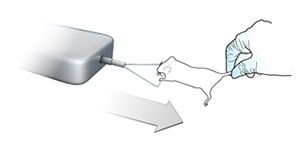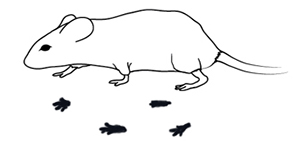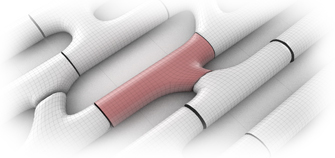SERVICES
-
VOLUNTARY MUSCLE FUNCTION
-
Grip Strength

The forepaw grip strength assay can detect dysfunction in rat and mouse models of motor neuron and muscle disease. It is often used in the study of diseases such as ALS and Huntington's disease. This is a quick assay that can provide basic information on muscle strength and neural enervation.
-
Treadmill Functional Capacity

This assay tests forced exercise capacity on a motorized treadmill. It allows us to detect the effects of diseased or damaged muscles, as those muscles tend to fatigue faster. Most rats and mice are amenable to this test with proper acclimation to the treadmill.
-
Voluntary Wheel Running

This assay examines the voluntary exercise capacity of mice or rats. Mice or rats are individually housed in a cage with a running wheel. A computerized system tracks the movement of the wheel. We can use the animal's total distance, speed, frequency of running, and other parameters to study the effects of disease or injury on normal activity and to observe drug or treatment efficacy.
-
Gait & Locomotion Analysis

Gait analysis is one of the more advanced in vivo tests and is a useful tool for assessing neuromuscular and musculoskeletal function in rodents. Alterations in neuromuscular function are often barely detectable by visual inspection, but we can readily identify them using this system. Myologica has significant experience with gait analysis, using the newest available technologies. We can gather information on rats and mice while they walk, climb, balance, wade, or swim. We can obtain sensitive and specific readouts of neuromuscular impairment and improvement while correlating movement of all relevant body parts, such as forelimbs, hind limbs, trunk, and tail.
-
DIRECT MUSCLE FUNCTION
-
Intact Muscle Phenotyping

In this preparation we anesthetize the animal and assay the torque of major muscles without surgical isolation of the muscles or alteration of the neurovascular supply. An important advantage of this method is that we can perform longitudinal studies that do not require sacrifice of animals. The muscle also remains in a normal physiological environment. This is a highly versatile system that also allows us to simulate muscle injury and fatiguability.
-
Nerve-Evoked Muscle Force Generation

This assay has the advantage of providing a measurement of the specific force of an isolated muscle rather than the torque of a muscle group. We prepare a partially dissected preparation in a deeply anesthetized animal where the neurovascular supply remains intact during the experiments, allowing normal neural excitation and blood flow.
-
IN VITRO ASSAYS
-
Ex Vivo Muscle Force Generation

We can help study muscles independent of nerves by performing whole muscle contraction experiments in an excised muscle. We surgically excise an intact muscle and maintain it in an in vitro bath between a length controller and force transducer. We evoke muscle contraction by direct electrical stimulation. We can then assess muscle force generation similar to an in vivo preparation. This method is amenable to determine muscle-specific treatment or drug efficacy, as well as stress protocols, such as fatigue and isometric contractile injury.
-
Isolated Myocytes

Dissociated myofiber preparations allow us to isolate individual cells, so you can look at parameters which you cannot observe in whole muscles. This allows investigators to search for mechanisms to explain drug function.



